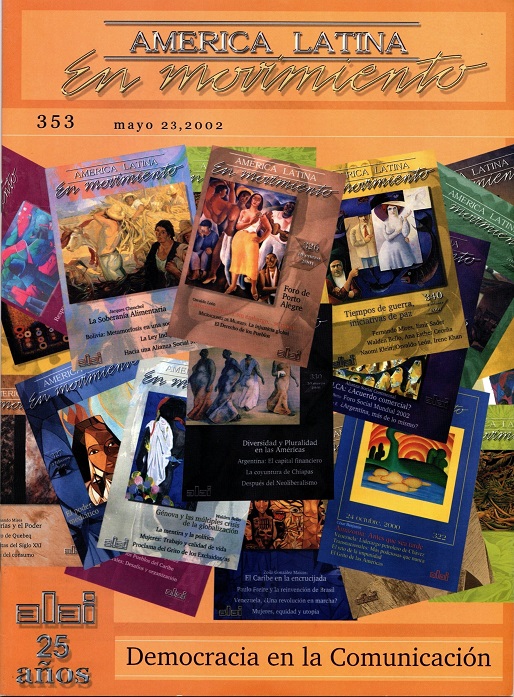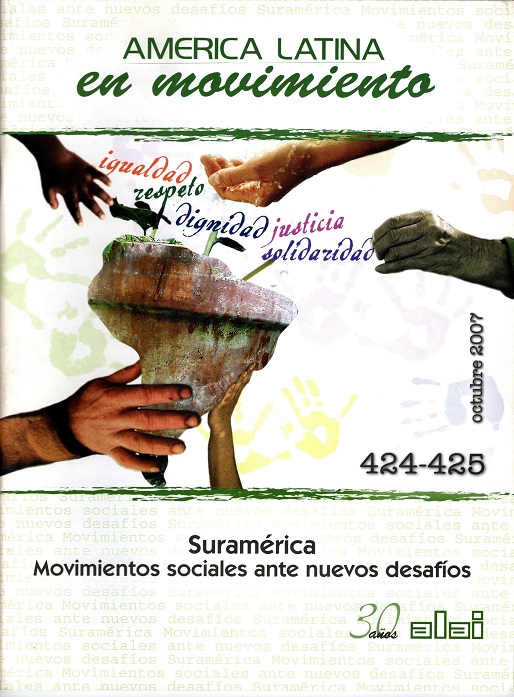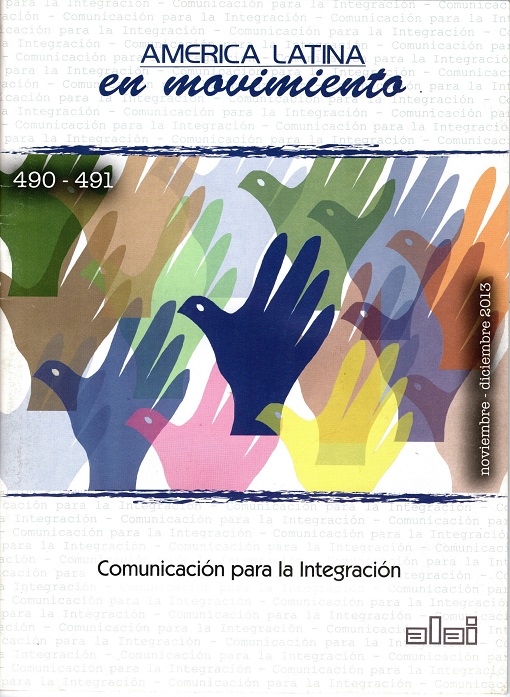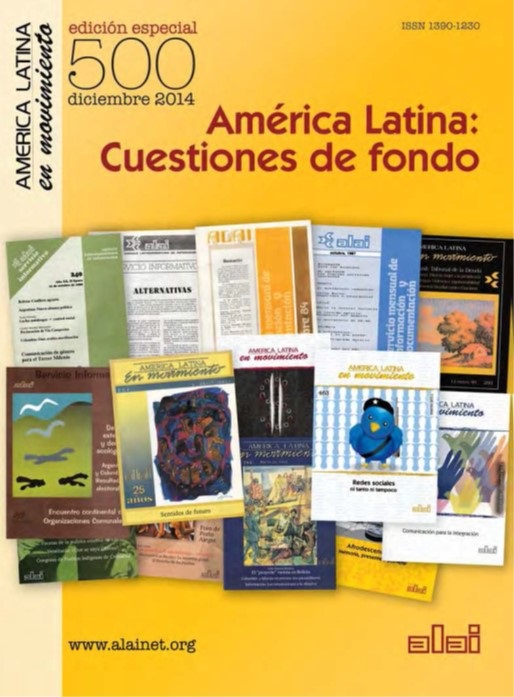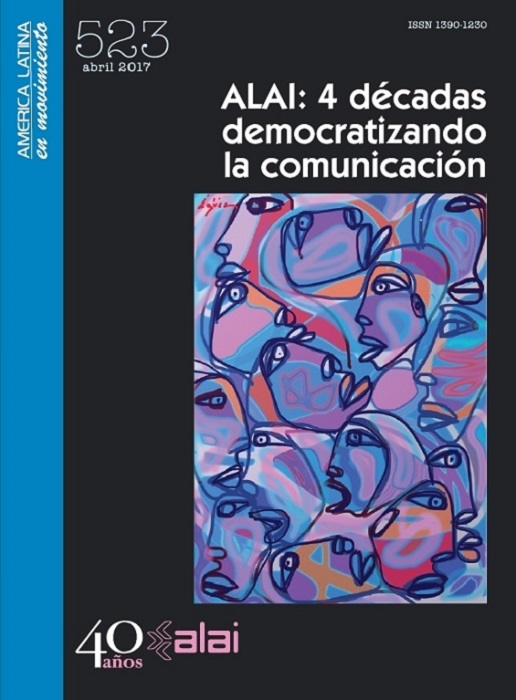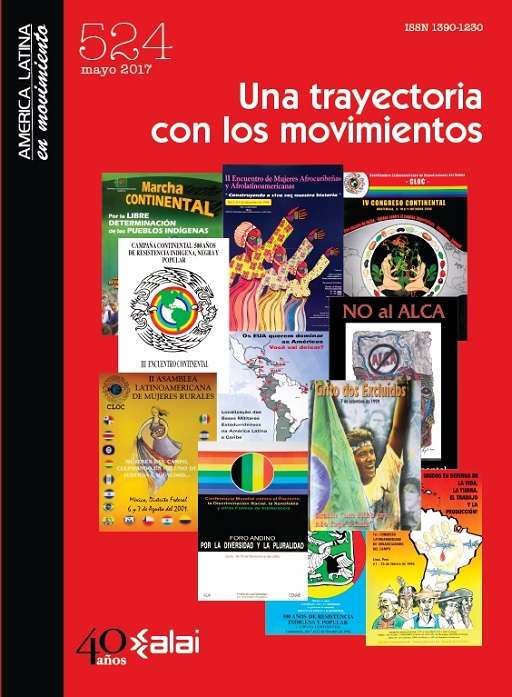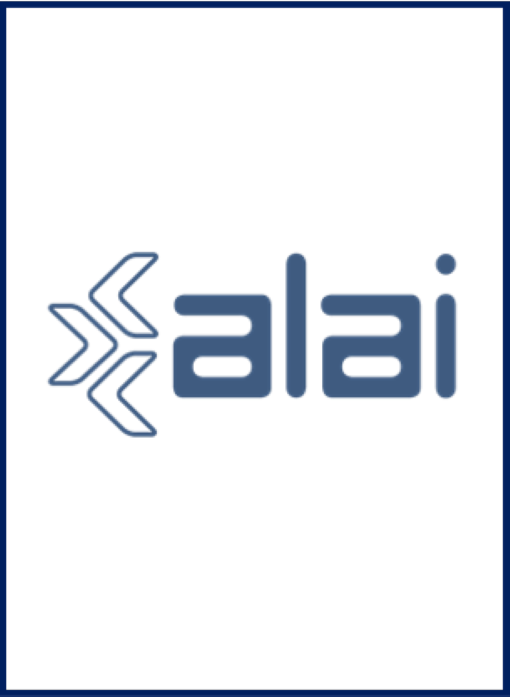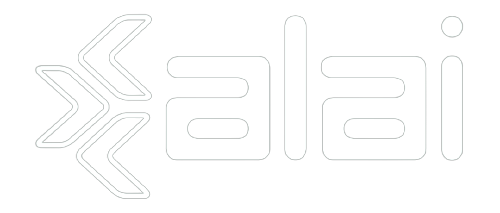Indigenous People Challenge Peru\'s Soy Highway
- Opinión
The Initiative for the Regional Integration of Infrastructure in South America (IIRSA) is the latest in a series of disastrous international bank-financed schemes to bring "development" to the Amazon basin. Launched in 2000 by the governments of the region and taking advantage of a confluence of regional financing from major international finance institutions, IIRSA contains 350 projects that include ecologically damaging highway, dam, pipeline, and port projects. Many of these will open up new areas to large-scale, export-oriented agricultural production and energy extraction in the Amazon basin. The following is an interview with 2007 Goldman Environmental Prize winner Julio Cusurichi, representative of the Federación Nativa de Madre de Dios (FENAMAD). A set of megaprojects of such size and reach offers the opportunity to reexamine the question of what "development" really means, who creates it, and who benefits from it. IIRSA is a new chapter in the decades-long history of top-down development decisions bankrolled by International Financial Institutions (IFIs) that are in the business of recycling international capital in order to create incentives for further corporate expansion and growth.
Historically, infrastructure megaprojects bankrolled by IFIs in areas like the tropical forests of the Amazon have led to increased poverty, displacement, exposure to disease vectors, cultural erosion, and violent conflicts for indigenous peoples. Nonetheless, South American governments and international banks have paid little attention to the voices of civil society and indigenous peoples whose lives will be directly and adversely affected by the construction of these projects.
The Interoceanic Sur highway in
The highway opens up areas of the Peruvian Amazon formerly closed to corporate agriculture and energy interests. It also opens up a Pandora\'s Box of issues surrounding the costs and benefits of road construction in the Amazon basin. For some, the highway represents a greater opportunity for smallholders, campesinos, and indigenous peoples to get their goods to market and receive exported goods from areas such as
Eighty percent of the entire Peruvian Amazon is now open to bidding from oil companies from across the world. Hunt Oil of Texas has acquired the concession for block 76, almost entirely superimposed upon the recently-created Amarakaeri Communal Reserve.
In an interview in Puerto Maldonado, 2007 Goldman Environmental Prize winner and representative of the Federación Nativa de Madre de Dios, Julio Cusurichi tells of the impacts of IIRSA\'s Interoceanic Sur highway, expansion of agribusiness, and increased oil extraction for the indigenous peoples of Madre de Dios, Peru. Cusurichi notes that the construction of the Interoceanic Sur will follow in the tradition of destructive highway projects in the Amazon if larger issues such as the urgent need for legal recognition of indigenous peoples and demarcation of their territories, clear economic and ecological zoning laws, integral social and environmental impact studies, and development plans to benefit the local populations are not attended to first.
ZH: Julio, tell us about the Interoceanic Sur highway—how is it going to affect the indigenous peoples of the
JC: The Interoceanic is going to be a threat more than a benefit for indigenous people, because the Interoceanic cannot be separated from its larger context, which is IIRSA. And IIRSA isn\'t just the Interoceanic, it contains projects for the entire Amazon basin. But the Interoceanic worries us as indigenous people since, for one, the regional populations are simply uninformed about the projects ... The majority of people don\'t have any idea of the effects that this Interoceanic highway is going to have.
One important point has to do with legal land titles for indigenous territories. If we don\'t guarantee judicial security for our lands, we will be exposed to large waves of migration that will come in over this road to get lands. So if our regional and national governments don\'t have a vision of how to guarantee the rights of the territories of indigenous people, we\'re going to have a serious threat.
The other important point is the environmental impact. We\'ve learned that in the Environmental Impact Assessment (EIA) of the Interoceanic, only a few areas are considered. There are zones that will be affected directly but also zones affected indirectly. They\'ve created a barrier of three kilometers from the road to prevent environmental impacts, but the impacts won\'t be felt only within those three kilometers. Environmental impacts are felt at a regional level. So, they\'re fulfilling their obligation to the norm that regulates directly affected zones, but this norm does not reflect the reality of regional impacts. This study, if they limit themselves to the norm, will not take into account the regional situation.
On the matter of agriculture, specifically cattle ranchers, a lot of people have already acquired land titles. If the government doesn\'t take into account the need to grant secure land titles to native peoples and peasant farmers who don\'t have them, it will be a major concern. We as FENAMAD have led the discussion and debate on this issue and now there\'s an alliance of federations here in
We presented a technical report (to the Minister of Transportation) making observations on the EIA of the highway. For example, the current EIA doesn\'t take into account the impacts of the highway on Tampobata National Reserve or on Amakaeri Communal Reserve where many indigenous people live, and it has incorrect information about impacts on native communities living in
We know that the Interoceanic project and projects for so-called "development" are going to benefit large agricultural interests and not local populations. Local populations are not prepared economically to benefit from the highway and there\'s been no interest on the part of the national or regional government to give us at least a few incentives to prepare ourselves in every sense—economically and socially—to see how we could benefit somehow from the highway.
If the government doesn\'t promote a sustainable vision for our region, what we\'re going to see are large trucks passing through here, big businesses from the Brazilian side. There they have a broad vision of expanding soy cultivation, which is not going to be very positive, since the territorial space for cultivation is going to affect indigenous peoples, riverside communities, and rural communities. So this is only a capitalist vision, not a vision that will help the poor populations of our country.
ZH: Why hasn\'t the Peruvian government finished the legal demarcation of indigenous lands here in
JC: If there are fewer indigenous territories demarcated, it\'s easier for the government to occupy the Amazon. If there\'s more demarcation, then the territories are already occupied. We\'ve occupied the Amazon for thousands of years, but we lack legitimacy. When the government talks about occupation, sometimes there\'s a community that isn\'t recognized, that doesn\'t have a land title—and if they\'re not legally recognized, they don\'t exist on the level of country data. We have existed since before the formation of nation-states, but some of us are not legally recognized. A priority should be to legally recognize these territories. And not only indigenous territories, but the territories of chestnut producers, and small-scale loggers who have lived a long time in the region, also must be recognized.
ZH: Which indigenous peoples have not had their territories demarcated yet?
JC: For example, the Masenawa from Puerto Azul— and some extensions of territories that are still pending: Arasaire, Diamante, Boca Inambari, and Pilar. We need to focus first on these land titles and then work on other matters if we can. If we don\'t guarantee juridical security for indigenous peoples, it will cause a big problem, because the previous land titles were issued from an occidental perspective and were very small. They didn\'t include the whole territory, they didn\'t include where we hunted, the land we used in our daily activities. They would say to us, "Let\'s see, there are 40 \'indios\' here, multiplied by
ZH: Are you worried that, if and when the Interoceanic is completed, soy will begin to invade
JC: Not only will soy invade, there will also be a lot of migration. With the highway, all of a sudden we\'re going to see major investment come in and buy up a lot of territory, a lot of agricultural zones, and we\'re going to get to a point where we depend on one large landowner who has a lot of hectares. And we won\'t have any alternatives to offer. What will happen is that we\'ll fall into the hands of the investors.
And then we won\'t be able to confront that social and economic problem. Many small-scale farmers, chestnut producers, and loggers are going to lose their rights, because they won\'t be able to offer products or negotiate, and this will cause chaos. The regional government isn\'t taking this into account and they don\'t have any vision of how this highway will benefit the communities through sustainable activities, for example ecotourism. We cannot compete with
We should already be debating this, but the regional governments are asleep. Social organizations are knocking on their door so they can at least wake up and see how to really get a regional economy going here in
ZH: Will the Interoceanic Sur highway exacerbate existing problems for indigenous peoples in
JC: Yes—one is the problem of oil extraction. There are four oil blocks here in
Oil activity in
The second problem is illegal logging, which is advancing with few controls. We as indigenous people have been demanding, since 2001, the creation of observation posts to minimize the impacts of illegal logging—we\'ve helped the Peruvian government by pushing forward this program of sustainable forest management. We have led by applying the forestry law with a much more long-term, sustainable vision—but the government hands out the concessions and turns around and walks away.
There are small-scale peasant producers who are trying to secure support from the government, but the government doesn\'t support them as much as they do the large oil companies. The Peruvian government goes into debt for the large oil companies, using loans that we Peruvians have to pay back, to begin the oil projects. But for the sustainable forestry concessions, which are for small business people from the area, there\'s no support. So why have we supported small-scale peasant producers, like chestnut producers? Because we want to organize our territories so that there\'s no longer illegal logging, and so that the rights of the territories of indigenous people in voluntary isolation are respected.
We respect their self-determination. Because of this we\'ve put forth alternatives such as a territorial reserve for isolated peoples that was approved in 2002. But it hasn\'t served its purpose, since illegal loggers still invade these lands by the thousands. In other words, it doesn\'t work. It\'s not fulfilling its role, there\'s no control over fauna and flora. So we are creating observation and control posts with the help of allies and friends to see how we can control these lands, similar to the model of the FUNAI in
And the third problem, which I would address to the governments of industrial countries such as the
We\'re here showing to the world what our vision is and how international policies should be oriented to fit the realities of Amazonian countries. These are some of the visions of our ancestors, who still serve as guides to orient our peoples so that great chaos doesn\'t happen, so great changes don\'t happen while we don\'t have the tools to mitigate their effects. Both sides need to work together—the so-called developed countries have to listen to us, and include us in their policy proposals to help mitigate climate change.
ZH: Could the Interoceanic Sur bring benefits?
JC: Yes, if it comes with other social packages, as I mentioned. But if the Interoceanic comes on its own, and the population can\'t discuss it, debate it, and propose some economic steps that are more in accord with our reality, it\'s going to be more harmful for us.
If there\'s willingness to discuss which activities should be promoted in
- Zachary Hurwitz is a graduate student at the Department of Geography and the Environment at the
Source:
[1] Convention 169 of the International Labor Organization stipulates the rights of indigenous peoples to make decisions regarding the use of natural resources in their territory.
[2] FUNAI, Fundação Nacional do
Del mismo autor
Clasificado en
Integración
- Facundo Escobar 14/01/2022
- Eduardo Paz Rada 03/01/2022
- Francisco Eduardo de Oliveira Cunha 03/01/2022
- Adalid Contreras Baspineiro 13/10/2021
- Juan J. Paz-y-Miño Cepeda 21/09/2021
